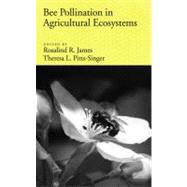
Note: Supplemental materials are not guaranteed with Rental or Used book purchases.
Purchase Benefits
What is included with this book?
| Forword | p. v |
| Contributors | p. xiii |
| Bee-Provided Delivery Services | |
| Bees in Nature and on the Farm | p. 3 |
| Crop Pollination Services From Wild Bees | p. 10 |
| Crop Pollination in Greenhouses | p. 27 |
| Pollinating Bees Crucial to Farming Wildflower Seed for U.S. Habitat Restoration | p. 48 |
| Honey Bees, Bumble Bees, and Biocontrol: New Alliances Between Old Friends | p. 65 |
| Managing Solitary Bees | |
| Life Cycle Ecophysiology of Osmia Mason Bees Used as Crop Pollinators | p. 83 |
| Past and Present Management of Alfalfa Bees | p. 105 |
| The Problem of Disease When Domesticating Bees | p. 124 |
| Environmental Risks Associated With Bees | |
| Environmental Impact of Exotic Bees Introduced for Crop Pollination | p. 145 |
| Invasive Exotic Plant-Bee Interactions | p. 166 |
| Estimating the Potential for Bee-Mediated Gene Flow in Genetically Modified Crops | p. 184 |
| Genetically Modified Crops: Effects on Bees and Pollination | p. 203 |
| The Future of Agricultural Pollination | p. 219 |
| Index | p. 223 |
| Table of Contents provided by Ingram. All Rights Reserved. |
The New copy of this book will include any supplemental materials advertised. Please check the title of the book to determine if it should include any access cards, study guides, lab manuals, CDs, etc.
The Used, Rental and eBook copies of this book are not guaranteed to include any supplemental materials. Typically, only the book itself is included. This is true even if the title states it includes any access cards, study guides, lab manuals, CDs, etc.